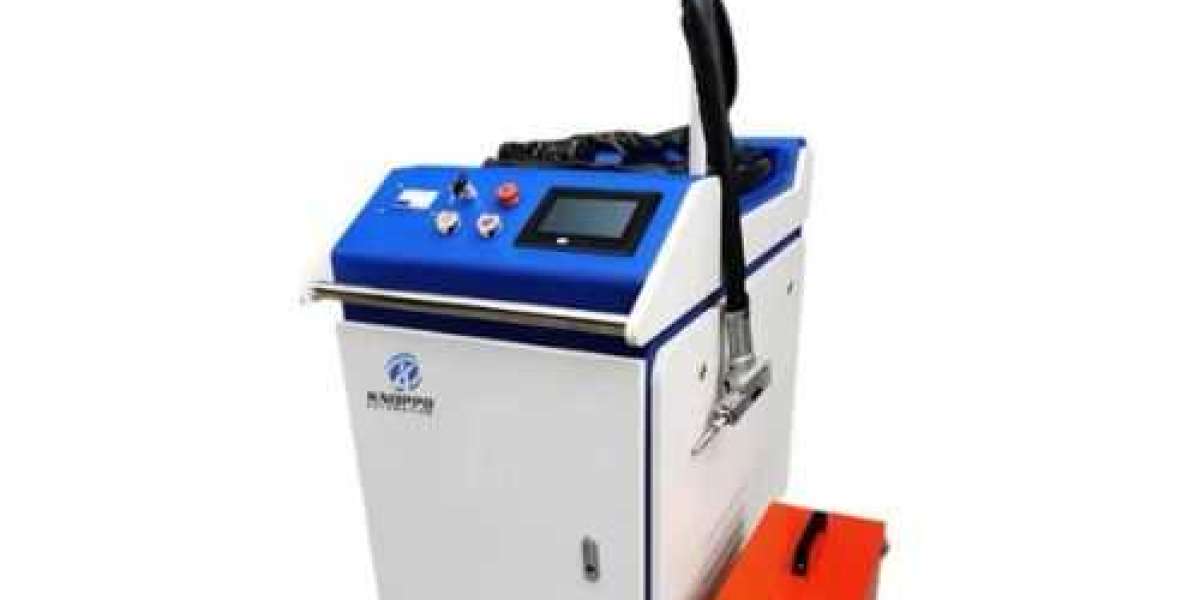The demand for reliable and efficient machines is no longer limited to large-scale production lines. Small workshops, repair units, and custom fabrication businesses are equally searching for solutions that save time and improve output quality. The handheld fiber laser welding and cutting machine has stepped in as a practical tool that meets these requirements across industries such as automotive, aerospace, construction, shipbuilding, and home-based fabrication.
Why the Shift Toward Handheld Laser Technology?
For decades, welding and cutting tasks relied on conventional equipment like arc welders, TIG, MIG, or plasma cutters. While effective, these systems often come with challenges such as heavy gas consumption, extensive post-processing, and limited mobility. The introduction of fiber laser technology into handheld formats has solved many of these issues.
The handheld fiber laser welding and cutting machine provides:
Seamless transition from cutting to welding in a single unit.
Precision control for thin sheets as well as thicker metal parts.
Portability that allows on-site applications, eliminating the need to transport large workpieces.
Reduced material wastage due to accurate beam focus.
This shift is driven by industries that demand higher productivity without compromising on quality, making handheld laser systems an essential investment.
Understanding the Technology Behind the Machine
The handheld fiber laser welding and cutting machine is built on fiber laser technology, which generates a concentrated laser beam transmitted through a flexible fiber optic cable. This design makes it highly efficient in both welding and cutting operations.
Fiber Source Efficiency – Fiber lasers are known for their high power conversion efficiency, meaning more electrical energy is converted into laser power, reducing overall energy usage.
Beam Quality – The beam produced is extremely fine, allowing pinpoint accuracy in welding joints and precise cutting lines.
Handheld Torch Design – Unlike stationary machines, this handheld format provides flexibility for operators to reach complex angles, edges, or hard-to-access areas.
This combination of advanced optics and ergonomic design ensures that the machine can adapt to different work environments.
Applications Across Industries
The reach of the handheld fiber laser welding and cutting machine goes beyond workshops. Its multifunctionality makes it suitable for a wide variety of industrial and commercial applications:
Automotive Manufacturing and Repair
From welding car body panels to cutting exhaust pipes, this machine simplifies the repair process.
Lightweight portability allows technicians to use it directly in assembly lines or workshops.
Aerospace Industry
Aerospace requires precision and high-quality joints.
The fiber laser’s clean welding capabilities help ensure durable connections on aluminum, stainless steel, and titanium components.
Construction and Infrastructure
Structural steel welding, pipe cutting, and on-site modifications become easier with handheld use.
No need to dismantle large structures to move them to workshops.
Shipbuilding and Marine Repair
Saltwater exposure leads to frequent metal repairs on ships.
The machine is effective for repairing hulls, pipelines, and other onboard systems.
Home and Small-Scale Fabrication
Artists, designers, and custom fabricators benefit from precise cutting of decorative pieces.
Small repair shops can use the machine for quick and accurate welding jobs.
Performance in Real-World Use
When applied in real projects, the handheld fiber laser welding and cutting machine demonstrates clear performance improvements. For instance, workshops that previously required multiple tools for cutting and welding now use one integrated system. This not only saves space but also reduces the time needed for switching equipment.
In fabrication plants, operators highlight the speed advantage. Welding joints that took minutes with conventional machines are completed in seconds with fiber lasers. Similarly, the cutting process yields smoother edges, minimizing or eliminating post-process grinding and polishing.
Operator Experience and Training
One of the standout aspects of this technology is its user-friendly operation. While traditional welding requires extensive training and certification, the handheld fiber laser welding and cutting machine shortens the learning curve. Operators can quickly adapt to its functions due to:
Simple torch-like design.
Clear control panels with adjustable power settings.
Minimal need for complex setup.
This makes it suitable not only for experienced technicians but also for small workshops that cannot invest in months of specialized training.
Economic Perspective
Investing in a handheld fiber laser welding and cutting machine is often considered a strategic decision rather than a mere purchase. Businesses evaluate cost not only by the initial machine price but by the long-term savings it provides.
Reduced labor time means more projects can be handled within the same period.
Lower energy consumption compared to traditional welding machines.
Less post-processing reduces overall material costs.
Over time, these savings outweigh the initial investment, making it an appealing option for businesses of all sizes.
Environmental Considerations
In today’s manufacturing environment, sustainability is more than just a trend—it is a necessity. The handheld fiber laser welding and cutting machine supports this shift by:
Minimizing waste through accurate cuts.
Requiring fewer consumables compared to gas-based systems.
Operating with lower energy usage.
This aligns with industries striving to meet stricter environmental regulations and reduce carbon footprints.
Future of Handheld Laser Systems
As technology evolves, handheld fiber laser welding and cutting machines are expected to become even more compact, powerful, and affordable. The integration of AI-driven monitoring systems, smart cooling mechanisms, and enhanced safety features will further expand their reach.
Industries that were once hesitant about adopting laser systems are now exploring these machines due to their proven efficiency. Small businesses that once considered such technology out of reach are beginning to integrate them, expanding competition and innovation in the market.
Final Thoughts
The handheld fiber laser welding and cutting machine has redefined what is possible in modern metal fabrication. Its portability, efficiency, and dual functionality make it an essential tool for industries ranging from automotive and aerospace to construction and small workshops. By combining welding and cutting in a single compact unit, it not only streamlines operations but also ensures long-term reliability.
As more industries shift toward precision-based processes, this technology stands as a practical solution that delivers speed, accuracy, and cost savings. Whether applied to large-scale projects or small custom jobs, the handheld fiber laser welding and cutting machine is shaping the future of metalworking with unmatched efficiency and adaptability.













